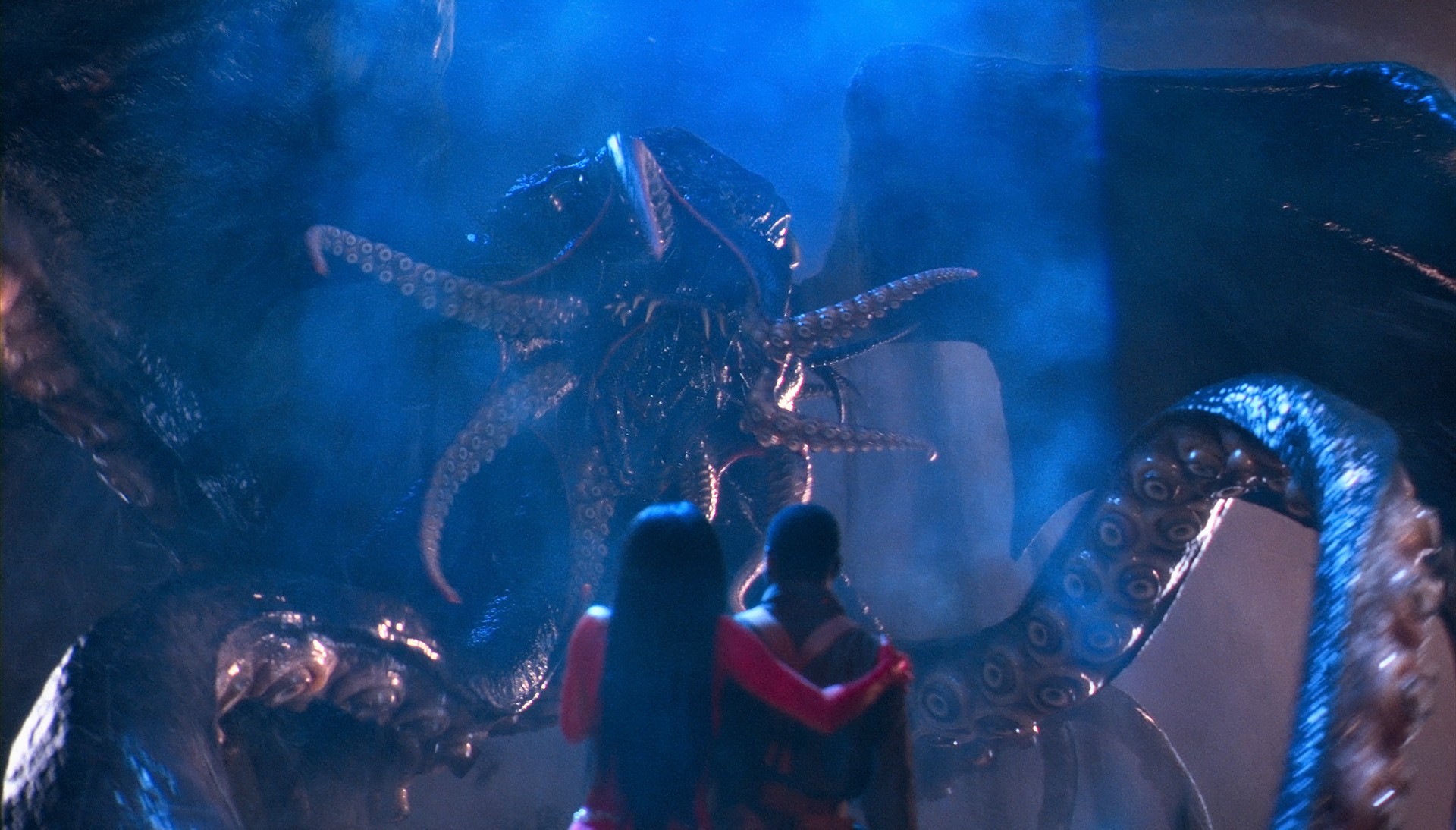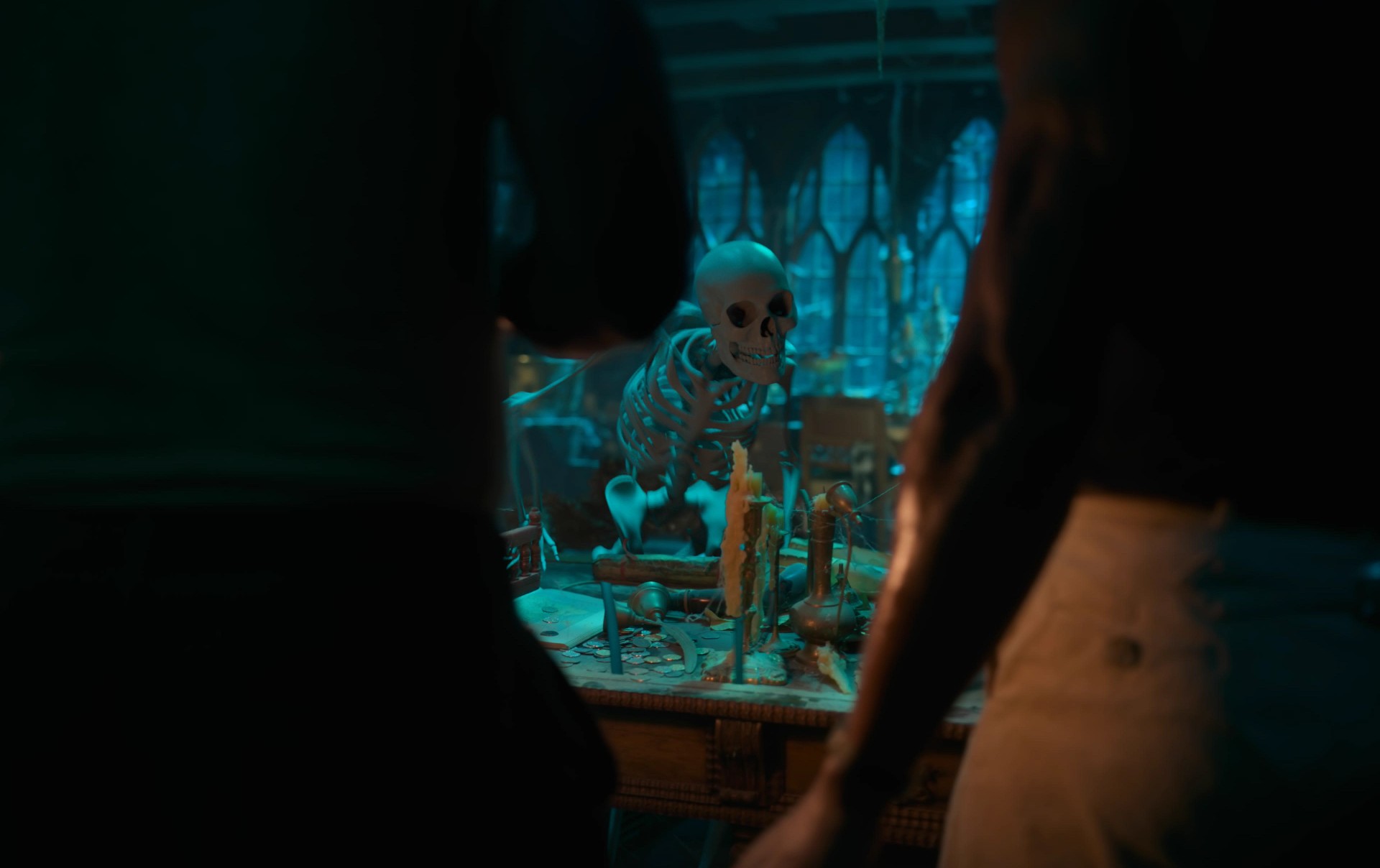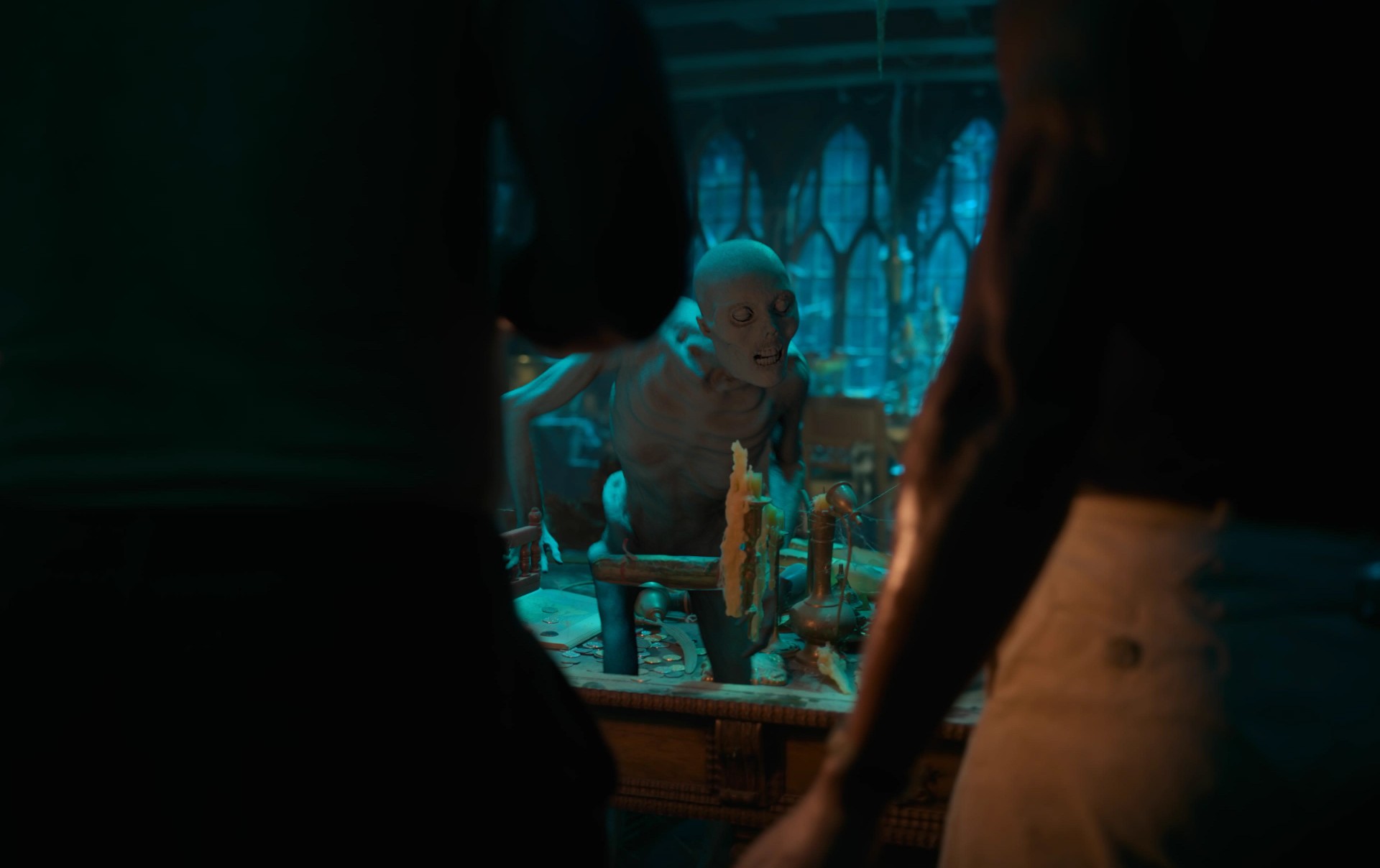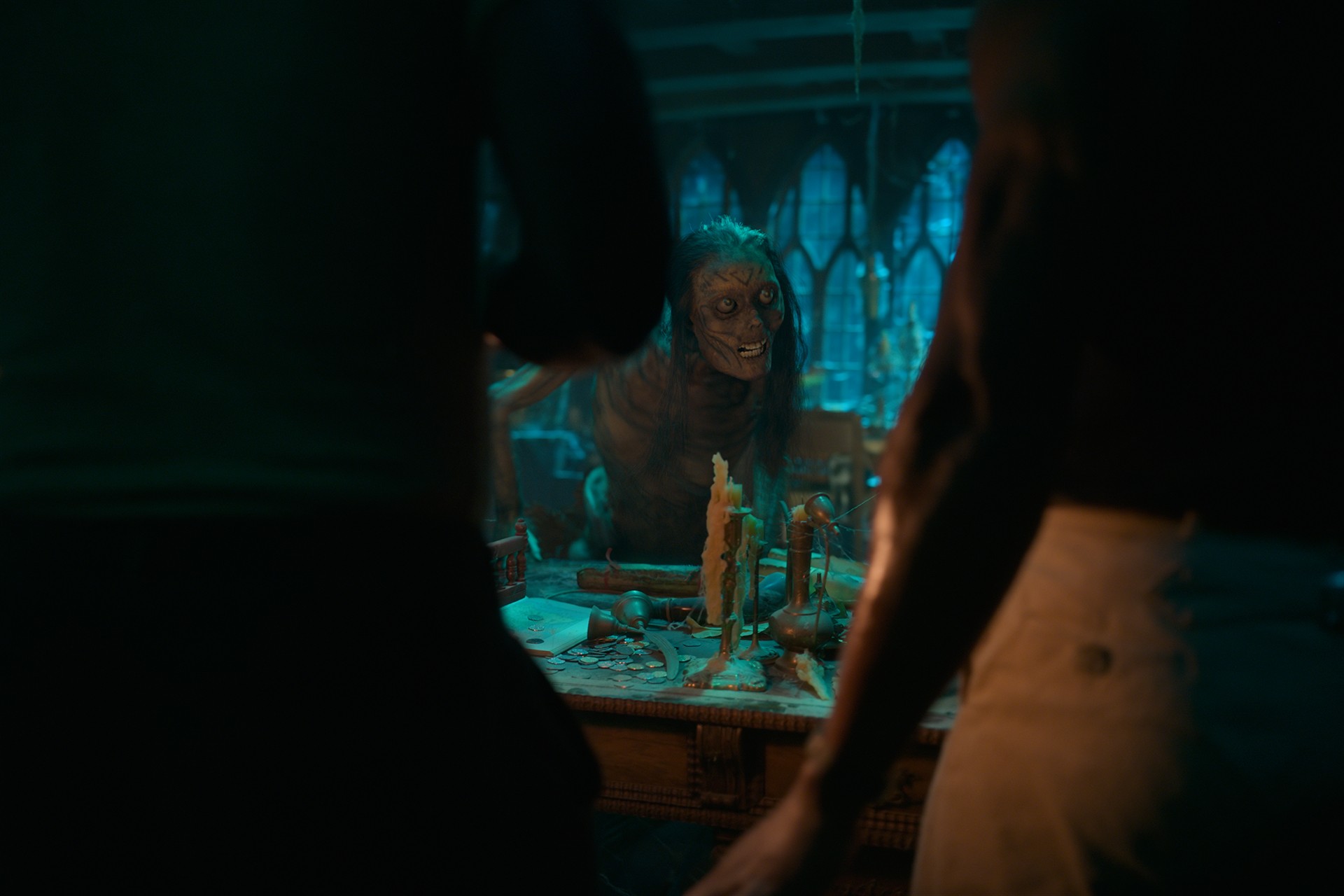HBO’s Lovecraft Country is one of 2020’s biggest hits with its genre-bending adventure featuring a group of Black protagonists caught between warring factions of arcane magic users in segregated 1950s America.
Based on the novel of the same name by Matt Ruff, Lovecraft Country was developed by Misha Green for HBO and blends the eldritch horror of novelist H.P. Lovecraft with a host of terrors both fantastic and all too real, during a time period when hatred fueled by racial prejudice and injustice was woven into much of the population’s daily existence. The series has received critical acclaim for both its powerful thematic elements and its fantastic visual effects developed by various studios and overseen by HBO’s lead VFX supervisor, Kevin Blank.
Digital Trends spoke to François Dumoulin, VFX supervisor for Rodeo FX, the primary VFX studio working on Lovecraft Country, to find out how some of the show’s most memorable moments were created. (Spoiler warning: This interview describes scenes from the first season of the series.)

Digital Trends: When you first met to discuss the series, what was your initial reaction to what you were told about it?
François Dumoulin: I was introduced to the show back in April 2019. They said it was called Lovecraft Country, and I wanted to sign on right away because I was a huge Lovecraft fan when I was a teenager. The work of H.P. Lovecraft was my first introduction to fantasy and horror. I initially thought it was going to be an HBO show based on Lovecraft’s writings, but when I was presented with a breakdown of the show, I was even more enthusiastic, because it was something I’d never seen before. Every single episode was like a mini feature film with its own universe, its own tone, and its own challenges.
Let’s start with that crazy opening sequence from the first episode. It mashed together so many elements — sci-fi, war, horror — and really set the tone for the show. What was development like on that scene?
That was a very ambitious piece, but it perfectly represents the entire spirit of what Lovecraft Country is. It starts off archival-looking in black-and-white … and then as he comes out of the trenches, black-and-white transforms into a sort of flamboyant technicolor look, with very saturated color. It looks like a comic book. And then out of nowhere, you’ve got giant robots and monsters and UFOs. That completely embodies what the show is. Everyone was very anxious about that scene, because they were like, “Are we going to really spend $10 million dollars on the first 90 seconds of this show?” So we had to make it crazy enough to satisfy Misha’s vision, but also cost-effective.
I assume that scene went through some changes over time to find that balance …
The first step we took was to look at Misha’s writing. She had written different versions of that scene involving all kinds of different creatures — including werewolves and dragons in some of them. We took all of those ideas and created a piece of concept art that looked like a big painting. That painting represented the world of that opening scene. It resembles one of the final shots in that sequence, with the trenches in the foreground and a valley in the distance with crowds of soldiers and robots and UFOs and everything else. It’s a gorgeous image, and that was the conversation starter for everyone.
Once that was done and we presented everything we created to HBO, the next step was to try and make it happen within a reasonable budget. We had to simplify some of the stuff. Instead of having three different kinds of monsters, for example, we said, “OK, let’s do just one, but let’s do one that’s really crazy.” So we came up with that Lovecraftian creature — kind of a giant squid with wings. We created fewer elements, but made them all very memorable and unique.

The shoggoth creatures are introduced in that first episode and make a few appearances in the series after that point. I suspect the look of those creatures might have changed over time, too. Did you work on them?
Most of the shoggoth you see in episode 1 and 8 — and you’re going to see them again in episode 10 — were done by Framestore in London. They were leading the effort on that element, but we were involved with some initial development of the creature. A pilot episode for Lovecraft Country was actually shot around two years ago. Misha was not entirely happy with the first design of the shoggoth used back then, and we were asked to do what we call a “paint-over” — which was to look at the design for the pilot and propose some modifications. The idea of having its back covered with hundreds of eyes came from us, for example.
We did handle a very specific — and very gross — sequence in episode 1 with the shoggoth, though. In the scene, one of the evil cops is bitten by a shoggoth and he starts to transform. We were responsible for figuring out how we evolve from a human form into a shoggoth. That was an interesting bit to do, because we knew the final form of the shoggoth based on what Framestore was doing, and we also had some fantastic pieces of prosthetic makeup designed for the pilots that didn’t end up being used. So we had to create this computer-generated hybrid using the performance of a human actor, some reference prosthetics, and what we saw of the final creature. The end result is a combination of all of these different techniques.
The show also has a unique spin on the kumiho, the nine-tailed fox from Korean mythology. How were those scenes created for episode 6?
We did some initial concept art — a very striking image of a naked male character being suspended in the air by tentacles that are coming out of a female character’s orifices. The image was really captivating, and also very graphic and disturbing. The tentacles were coming out of her orifices and plugging into her victim’s orifices.

We did tests with stunt performers on wires and people in front of blue screens, and even talked about replacing people with CG digi-doubles, too. But both Misha and the director of that episode insisted on using stunt performers as little as possible and using the real actors — especially Jamie [Chung], who’s playing the girl, Ji-Ah. She’s so magnetic and intense that they were really opposed to using a stunt double or a body double.
So we didn’t shoot anything against a blue screen. Everything was shot on a set with only a very basic wire system to lift the body of the male protagonist. Everything else is CG. We initially discussed making some part of the tentacle a prosthetic, but we realized this would limit us too much with animation, because there’s only so much you can do with a prosthetic. We wanted the tentacles to be very snaky and free in their movements. So the shooting setup ended up being very simple: Two actors, with the guy in a harness to lift him from the hips, and that’s about it. Everything else is CG.

How were the tentacles added?
We created digi-doubles of both characters, replacing parts of the body or face so that we can have the tentacles coming out of orifices or going into orifices, and have the orifices dilate, compress, or expand, depending on what’s happening. The tentacles are covered in fur, so we wanted the fur to interact with the skin, too.
So there are a few shots where you’re looking at 100-percent digital characters, but it’s all based and grounded on the performance of the actors. Every time we could keep the real body or the real face, we did. But in almost every shot, some part of the body or part of the face is digital.

It’s such a unique scene to pull off. Did you ever sit back and think, “I can’t believe I’m working on something like this”?
It really was one of the oddest things to work on — particularly because of the pandemic situation. What you see on the screen isn’t porn, but in order to do what we did, we had to manipulate naked digital characters and make tentacles go inside of various orifices and come out of them. For some of our artists who ended up working from home — particularly the artists with kids — working on it was very complicated. Some of the artists were like, “François, I’m sorry, but I just can’t work on that scene. I’ve got kids at home.”
Yet another unforeseen complication of the pandemic …
Yes, absolutely. Totally unforeseen.
What’s the scene you’re most proud of working on so far in the series?
We worked on a transformation scene in episode 4 of the show that was very challenging. When they go to the museum in Boston, they end up inside a pirate ship and wake up a mummy who transforms from a desiccated corpse into a living character.
That’s a shot I’m especially proud of because it all happens within a single, 360-degree orbiting shot. The camera circles around the character, and it happens with nothing to hide any camera tricks. You go from a desiccated mummy to a fully formed human being. The actress playing Yahima (Monique Candelaria), the Two-Spirit character, performed the actions that would represent her transformation while Atticus (Jonathan Majors), Letitia (Jurnee Smollett), and Montrose (Michael K. Williams) reacted to it. We did that a couple of times — maybe six or seven takes — and once that was done, we had the actress leave and we replicated the same camera movements. The cast are so talented that they replicated their reactions to what the actress was doing.
We ultimately ended up using a take where there’s no one sitting in that chair and they’re just reacting to nothing. So in the end, that character was completely created by computers. It’s entirely a CG creation.

That’s impressive — not just for your VFX work, but for the actors’ performances, too.
The actors were just fantastic and so collaborative with us. They really understood what we were trying to do.
Most of the time when there’s something off with a CG character in a show, it’s because the reaction of the cast is off, or the eyeline for their reaction is off, or something just doesn’t click. But this cast was phenomenal. They had such precise cues and every action, every eyeline, and every beat was awesome. They deserve so much credit for that because the visual effects would not work without them.

What’s something from the series so far that no one would realize is a visual effect?
When we achieve stuff in visual effects that nobody thinks are visual effects, I’m really, really happy. The entire show is shot in Atlanta, and when you see in the exterior shots of Chicago in the 1950s, it’s usually just a very small backlot surrounded by blue containers. Every street you see and every car you see driving down those streets are all computer-generated.
There’s a place we go back to in almost every episode: That little garage that’s also the office for the travel guide, near a small crossroad in the city of Chicago. Sometimes it’s in a brief dialogue shot, sometimes it’s more elaborate, and sometimes it’s in aerial views. But every time you see that location, it’s visual effects. They only built around three buildings, and only the first floor of most of them. So everything you see there is CG.
You went back in time again for episode 9, which was set during the Tulsa massacre. What went into creating — and destroying — that neighborhood in the episode?
They found this one street in in Macon, Georgia, which acted as the main street of Tulsa, as well as a little corner street in Atlanta that was a placeholder for the residential area where their ancestors live in the episode. Those environments are 90-percent computer-generated, though. The art department built portions of the houses and added a few period vehicles, but we extended or replaced most of the buildings, added some people on the sidewalks in the background and some moving vehicles. There’s a lot of CG and digital manipulation of the environment — particularly when we go into the last part of the episode, when the riot begins.
That part of the episode was very CG-involved. Fire is a tricky thing, and there was a lot of it in the final act. In the sequence inside of the house, when Letitia gets the book of names from Hattie, she witnesses her burning to death after a fire starts in the house. They did a phenomenal job on set with practical fire. The actors were really surrounded by flames during that scene, but at a safe distance. All of the fire you see on them is completely digital, of course. It looks very grounded because we had the practical fire reference inside of the shot as we were working on it.
All of the elements in this episode — whether it’s the destruction happening outside or the burning inside of the house — they’re all meant to look photo-real and behave like real fire, but there’s still this fantastical element in the middle of all of it we had to account for: Letitia. That spell makes her invincible, so we made the fire wrap and bounce around her.

What about the season finale? There were so many elements in play during that episode. What were some of the highlights for you and your team?
This was probably the biggest episode for us. We delivered about 200 shots, so it was like a feature film. The entire third act with the ritual used a lot of visual effects, because the entire environment was CG. It was interesting, because it’s set in the ruins of Ardham Lodge, which we created for episode 2 and then destroyed. The set piece in the center of the ruins came from a concept created by the art department. The process to build it was interesting because it was a collaboration between the art department and the visual effects department, and there’s a lot in that final act that calls back to things that happened in episode 2.
For example, the ritual itself — where Christina slashes Atticus’ arms and there’s an energy coming from his chest and pouring into Christina — that’s meant to be a negative reflection of the ritual from episode 2. There were a lot of similarities to that episode and others we worked on, so it made a lot of sense for us to work on this episode. Things get bigger and crazier from that point, with Ji-Ah using her tentacles again, and then we have that final scene with Diana and her robotic arm, which was another CG creation we built.

Thank you for bringing up the robotic arm! What can you tell us about that particular creation?
I don’t know much about it, because I haven’t read anything about season2 yet — and I couldn’t say anything about it even if I did know something! But if you remember, when Atticus comes back through the portal after he went to the future, he says the book he received from his son was given to him by a mysterious figure with a robotic arm.
Everything is connected…
It is. And it’s quite fascinating, the way that everything has a backstory in the show. Misha is always planting seeds to future stories. Everything she does is extremely structured. It was a joy to work with her, because she doesn’t micromanage every pixel. We’re not moving elements left and right with visual effects. She’s all about storytelling. So for us, it was a joy because we’re not just being told to move pixels around, we’re being given story points and intentions and part of the process. It’s very stimulating and so very creative.
It feels like Lovecraft Country is a fun show to work on for visual effects artists. Is that the case?
It’s a pleasure. It really is. It’s such a great show, and it has a lot to say about our times. It’s an important show, and it deserves all the praise it gets.
Season 1 of Lovecraft Country concluded Sunday, October 18 on HBO and the entire season is available now on the HBO Max streaming service.
Editors' Recommendations
- Building a better Predator: Behind the visual effects of Hulu’s horror hit Prey
- How visual effects made Manhattan a war zone in HBO’s DMZ
- How visual effects shaped Free Guy’s GTA-inspired world
- How The Matrix Resurrections used visual effects to plug in again
- How visual effects helped Tom Hanks’ robot costar come to life in Finch











